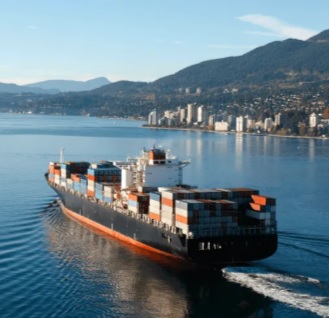Procedure for ships navigation in confined waters, related check item
Merchant ship's navigation in confined water in a safe manner is critical for a bridge team. Even navigators may have to perform under restricted visibility conditions with dense traffic all around. Watch officers may have to prepare for adverse weather in limited sea areas as well. Such conditions make their job difficult and demanding to fix vessels position and avoid collisions. Ships navigation in confined water thus involves many complexities, and careful consideration will need to be made for safe passage through such an area.
Summarized below some basic check items for safe transit in confined waters. Navigators should pay due regard to the particular ship types and characteristics. Procedures explained here are only indicative, not exhaustive and one must always be guided by practices of good seamanship.



Confined water check item -
Are large scale chart in use for such area?
-
Have charts and nautical publications been corrected upto date including T & P notices?
- Has information on local navigational warnings and notices been checked?
- Has the vessels draft been calculated exactly?
- Have the tides and tidal current been calculated properly and confirmed?
- Is the under keel clearance being maintained considering the following factors?
- Effect of tides Effect of squat and a change of trim in shallow waters
- Effect of swell and where applicable sandwaves
- Changes of draft and trim due to the specific gravity of sea water
- List of the vessel caused by steering
- Is the engine ready for operation anytime?
- Has the auxiliary generator been started?
- Have helmsman been put in position for manual steering to be ready anytime?
- Are additional power units for the steering gear running?
- Have operation of compasses and other navigational instruments been confirmed?
- Are the radar and ARPA operating normally?
- Is VHF listening watch maintained on Ch16 and a proper channel stipulated by local rules?
- Has the method of notice to VTS designated by regulations been confirmed?
- Has maneuvering ability of own vessel including turning radius been grasped?
- Is the ship's position fixing method & frequency established?
Safe Speed and Stopping Distance
The ColRegs require that every vessel shall at all times proceed at a safe speed so that
proper effective action can be taken to avoid collision and be stopped within a distance
appropriate to the prevailing circumstances and conditions.
In cases of need, the OOW shall not hesitate to use the engines to reduce speed further.
Moreover, allow more time for consideration and assessment of a developing situation.
However, timely notice of the intended variations of engine speed shall be given to the
engineers where possible or effective use made of UMS engine controls.
Whatever the pressure on Masters to make a quick passage or to meet the wishes of
owners, operators, charterers or port operators, it does not justify vessels and those on
board them being unnecessarily put at risk.
Related articles
What is confined water ?How to make Passage planning in confined waters
What is congested water ?
Action of officer of the watch in congested waters
Safety of navigation for containership
What are the steering gear check item ?
....
How to avoid navigation in heavy weather ?
....
What are the conditions that should be reported to master while navigating ship ?
....
What are the safe navigational procedure for the officer of the watch ?
....
How to deal with engine or steering gear trouble
?
....
What is gyro failure and countermeasures
?
....
How to respond with engine trouble
?
....
How to deal with ships collision accident
?
....
Navigational watch trasfer check item
....

Other info pages !
Ships Charterparties Related terms & guideline
Stevedores injury How to prevent injury onboard
Environmental issues How to prevent marine pollution
Cargo & Ballast Handling Safety Guideline
Reefer cargo handling Troubleshoot and countermeasures
DG cargo handling Procedures & Guidelines
Safety in engine room Standard procedures
Questions from user and feedback Read our knowledgebase
Home page

ShipsBusiness.com is merely an informational site about various aspects of ships operation,maintenance procedure,
prevention of pollution and many safety guideline. The procedures explained here are only indicative,
not exhaustive in nature and one must always be guided by practices of good seamanship.
User feedback is
important to update our database. For any comment or suggestions please Contact us
Site Use and Privacy - Read our privacy policy and site use information.
//Home //Terms and conditions of use
Copyright © 2015 www.shipsbusiness.com All rights reserved.



